How Are You Doing? — Drew Hunter

SEARCHING FOR THE LIGHT
“How are you?” A question that once seemed simple became one of the most complicated and confusing questions for me to answer during the dark days of my injury. Not only because the answer wasn’t my typical, “great” or “fantastic” that I was so used to answering, but because my answer was tangled and complex. And most days it seemed to be a negative answer tied in with exactly how running was going—shitty. Don’t get me wrong, I am living my dream of being able to pursue my passion at the highest level. But when the lines between your identity and your profession become so intensely blurred, it becomes hard not to tie your self-worth to your performance. For so long, running was a passion without struggle. Every year I improved with little-to-no setbacks. Until this past track season, I was riding out the hope that I was invincible and didn’t think anything would get in the way of my goals. But this sport, as it so often does, had other plans.
This piece has been on ongoing project for a few months at this point. I have rewritten it and started from scratch two or three times because I wanted to do it justice. I initially started writing it at some of my lowest moments, but that piece was too despondent. It wasn’t an accurate depiction of who I am as a person, or the message I hope to share with all of you. That person wasn’t hopeful or optimistic about the coming times. Then there was the person who was cleared to do his first 30 minute run on land. That person was eager to get all of his cheerful and positive thoughts on paper and talk about how much he loves running and that it’s the quintessential element to finding happiness and fulfillment. That isn’t the goal of this piece, either. Instead, I am trying to give a little bit of both these perspectives. Because there were some dark dark days in my injury journey. Through this process, I have learned so much about who I am as a runner and a human because of the good days and the bad. The balance between the beauty and the struggle of something that breaks your heart but also teaches you valuable life lessons is something I hope everyone gets to experience at one point in their athletic endeavors.
The Injury
Runners are so often walking on thin ice balancing an extremely high level of fitness while managing the aches, pains, and flare ups that come with that territory. In the early stages of my running career, I seemed to have that equilibrium perfected. Throughout high school I had a near perfect progression of racing performances without any setbacks in my training. This, I naively assumed, would translate into my professional running career. But not surprisingly, I began to experience complications that would tamper my progression as an athlete. This past summer, I was extremely fit, exceptionally confident, and most importantly, excited about racing for a spot on the World Championship team. However, in the weeks leading up to USA champs, I had been dealing with some foot pain. This pain began to manifest after my short racing stint in early June. It’s hard to pinpoint where my foot pain initially started—but a combination of three races in 12 days, hard track sessions in spikes, and a 12-hour travel day from the U.S. to Europe definitely didn't help my case. Nonetheless, I was a 21-year-old who was coming off some of the best racing of my life—I believed I was indestructible. That’s my problem. Greed. Certainly, I thought, coming off a new 3K personal best, I can squeeze out some more miles, some more fast running, a few more core and weight sessions, and become a better runner for it. If that’s how our sport worked, it would be pretty boring to watch, as only the runners with the most impressive training logs would succeed. But that isn’t track and field. Track and field is a game of consistency and maturity. The strongest in the long run survive—dealing with fewer injuries, being able to consistently put in the miles, and reap the benefits of those miles year after year. I knew all of this to be true, but for whatever reason I had gotten away from that. And I finally learned my lesson the hard way.
The Race
Leading into the race, I was terrified. Not only because of the possibility of my foot breaking, but because this was the first USA Championship in my professional career where I felt like something was on the line. I was one of only six guys in the race with the World Championship standard. This was only my third track 5,000m and I was lining up against guys who considered this event their bread and butter. No pressure. Right before I stepped on the line, my mentor and soft-tissue therapist, Marcus Allen-Hille, handed me a piece of paper that read, “with each exhale, I am present.” Everything was calm after that. Each lap in the race was just part of my journey and I took them one at a time. This mindful state allowed me to get through ten laps feeling pretty effortless and 100% pain-free. I was gonna make this team. And my foot wasn’t going to blow up. Bell lap—five of us are there. Three with the world standard. I’m making the team. I feel really good. I can win this. POP. 150 meters to go, my foot went. I limped in, but got the job done. Three stress fractures and a torn plantar. Yikes.
This was the highest running achievement I have had to date. One that justified my decision to become a professional athlete three years ago. But I wasn’t able to truly celebrate it thanks to the excruciating pain I was in. In hindsight—I shouldn’t have toed the line at USAs. I am still dealing with the consequences of putting myself through that race, and I’ve had an abysmal few months of injury because of it. But, as I often say to myself and other runners, this was my path. Ultimately, I was the one who made the decision to run and am the one dealing with those consequences—and that was where my path of exploration and growth began. The important thing was that I learned from this experience; and I did make the right decision to pull out of World Championships in the end. I gave it a go after USAs. I tried to put together some sort of training to get ready for Worlds, but it wasn’t a fight worth fighting. Runs with pain masked by ibuprofen, workouts cut short, so much swelling, I gave in. And it broke my heart. I knew my foot wasn’t healing and I knew I was unfit and not ready to perform at a world-class level. Deep down I knew what needed to be done. Having to look at myself in the mirror and pull the trigger on that decision was not easy. It went against everything I ever wanted from this sport.
The Dark Tunnel
I could write this article and tell you about how hard I cross trained, how much fire was lit under me after I pulled out of Worlds, and how ready I was for a big year in 2020. But that wasn’t the case. I did the cross training, the therapy, and the tedious little things to get better; I went through the motions. I went through the motions during my two hour days in the pool and on the bike. It was a burden, a necessary evil to keep me fit going into 2020, and something that constantly reminded me of the mistakes I made to end up here. And that’s okay. I love just about every aspect of my job and my life right now. But that doesn’t mean that every little detail about my life has to be ideal or stimulating. I could sit here and tell you how to cope with an injury and tell you what protocols to take but I am not going to do that. I will tell you that it’s okay to completely step away from running—like really step away. It’s alright to not tie your life to your profession day in and day out. Especially if it doesn’t feel right in your heart.
I would be lying if I told you I dealt with this situation in the healthiest of ways. For whatever reason, I stopped doing anything and everything that actually makes a person feel good about themselves. I stopped exercising entirely for a while, stopped reading, stopped reaching out and connecting with friends and family, stopped meditating, eating healthy, etc. Overall, I just felt really bad for myself. None of this helped. I wasn’t even sure why I was doing all of this, because deep down I knew this wasn’t helping me get out of the hole I felt I was so deep in. The turning point was when I started to develop a negative relationship with running and the sport. I had come to resent the same sport that made me feel most alive and allows me to live the life I want to live. Instead of being the supportive and caring teammate that I know I have been in the past, I became the bitter and jealous one that was insecure about the fact that things didn't go my way. That’s when I knew I needed help. I understood that way too much of my self-identity and worth was tied in with running. I realized that I couldn’t be this normal and happy person without my running endeavors. And that’s when I got some help.
Finding Help
I wanted this to be an informative piece that sheds light on what actually goes on in the mind of an athlete struggling with injury. I also wanted it to leave some sort of lasting impact and some things that may or may not help someone else who is struggling.
The first thing I did was to seek help from people who I knew I could rely on in my struggling situation. I found a team of people who were there for me in the darkest of times. I have always had my people in Boulder. Marcus Allen-Hille has been equal parts therapist and soft tissue therapist for me, always seeming to say the right things at the right time, as well as treat all my daily aches and pains. My incredible teammates, who gave me space to heal and focus while I was getting my mind and body healthy again. My strength coach, Chris Lee, who is always the first to remind me in the darkest of times that he is always my friend first, was always there to aid me when things weren’t clicking.
Despite all these loving and supportive people, I knew that I needed to get out of Boulder. I needed to get away from the place that I now associated with my injury and heartbreak. I booked a last-minute flight to Hawaii and had two of my closest friends (Hi Patrick Joseph and Alyssa Rudawsky) drop almost everything to spend uninterrupted time with me. That was the beginning of the healing process. I came back to Boulder for week, checked in with Coach Schwartz and Coach Lee, and told them I needed to go home for a while to see my family. I booked a flight home and was immediately greeted by my family with tons of love. A problem I have always had when dealing with injuries and setbacks is coming up with a formative plan of attack. I have always just wanted to push harder and work through it on my own, but not having someone hold me back has been my weakness. My mother knows this. So, as mothers do, she hopped on the phone with just about anyone and everyone she could, and figured out how to help me. Eventually, through a series of phone calls and conversations, we were led to Dr. Adam Tenforde. Dr. Tenforde told me to fly out to Boston literally a day after my mom was on the phone with him. I was going to spend an entire week in Boston to get treatment for my cuboid and plantar. Dr. Tenforde became my rock. Not only did he bend over backwards for me with a treatment plan and a return-to-run plan, but he was a positive presence that consistently reinforced that I was going to get healthy and be an elite runner again. Dr. Tenforde looked at EVERYTHING. He set up appointments for me to see a dietician, a PT to strengthen my weaknesses, looked at my blood work, and more. We began using shockwave therapy 3x a week. I ended up healing my cuboid stress fracture in three and a half weeks after the treatments. I was told by other doctors I was going to have to take 8 weeks completely off.
In this search for answers, we discovered a few things that were definitely holding me back in reaching my full athletic potential. Dr. Tenforde ordered a DEXA Scan, which is a non-invasive test that measures bone mineral density to assess if a person is at risk of osteoporosis or fracture. We discovered that I had low bone density in my lumbar spine—a red flag for athletes who are constantly sustaining stress fractures. This was a HUGE surprise to Doctor Tenforde and myself. A few conversations with my dietician and Doctor Tenforde, we quickly unraveled that I was most likely dealing with RED-S syndrome. Relative Energy Deficiency in Sport (RED-S) is a syndrome in which disordered eating (or low energy availability), amenorrhoea/oligomenorrhoea, and decreased bone mineral density (osteoporosis and osteopenia) are present. This wasn’t something I was familiar with at the time and wasn’t something I even realized I was struggling with. However, with a complete new nutrition plan in place, we began to tackle some deficiencies and weaknesses that were holding me back. As I slowly returned to running, I methodically upped my caloric intake while increasing my training loads. I now felt confident I was on the right path back to my old self.
It was so important for me to find Dr. Tenforde and have a doctor that was willing to grow and learn with me as I was still discovering what was wrong with me. Dr. Tenforde gave me a light to look for when the tunnel seemed incredibly dark. Dr. Tenforde gave me the courage to look at myself in the mirror and be at peace with the situation I was dealt. That was all I needed. I ended up continuing to see Dr. Tenforde every few weeks to solve my foot issues, and week after week, we saw progress. On top of the doctor visits, I got to spend copious amounts of time with a community that welcomed me with open arms. I slept on my good friend Ben Weingart’s couch for weeks at a time, and not once did he make me feel like my presence was a burden despite the contents of my unpacked suitcase all over his living room. I got to meet so many new people and quickly learned that in this sport of running, were all in this together. Everyone has setbacks and everyone is looking to bring each other up through these bumps in the road.
Secondly, I found a love for running again through the growth of Tinman Elite. I began to step up my involvement with the behind-the-scenes work of our team. I started doing the HR and Customer Support work for our team and was immediately inspired by the emails and messages I received each day. I was blown away by the impact that our team was having on so many individuals and communities. I began to pour my energy into connecting and serving those that support us so closely. I even ran an entire merch drop by myself. Having the opportunity to oversee the shipping of thousands of items to Tinman supporters right before Christmas was exactly what I needed to know that I can have an impact on the running community—even if I am not running. So, to anyone and everyone that sent kind emails and ordered merch to support our dreams: thank you.
The new guys: Aaron, Sydney, and Brian all absolutely blew me out of the water this fall. They all came into a completely new program with no hesitation, and were unwaveringly committed right from the beginning. And it paid off for them. From Aaron finishing second at the USATF Road 5K Champs, to Sydney nearly setting a team record in the 10 Mile at his pro debut, to Brian consistently flourishing week after week, I was overwhelmingly inspired by these guys. I needed those breakthrough performances more than they might have realized. With Reed, Sam, Joey, and myself struggling, it was hard to find inspiration in the guys that I normally leaned on so heavily. Having the new guys step up and grow into world-class runners in just a few months of Tinman training was what I so desperately needed in my time of struggle. Love you fellas.
Finally, I dove into some things that I normally wouldn’t have if I was training and racing at the highest level. I traveled, I jumped off some rocks in Hawaii, I scrambled up the Flatirons in Boulder, I went on some dates, I partied with my friends, I connected with new and old friends. And it was great. I learned that regardless of my injury, I can’t put my life on hold. I’m not on this earth to simply exist, I need to live a life of fulfillment and authentic connection with the people in my life. Sometimes in the thick of our training we get so complacent with everything outside of running, and being injured gave me an opportunity to stop doing that.
End Of The Tunnel
I am not an expert on navigating the injury process, and I will never claim to be, because with each setback I learn something new about myself as an athlete and a human being. However, there are a few things I will always come back to when struggling with a setback. With each day of bad news, my teammate, Sam Parsons, reminded me to “keep pushing, keep going.” I took this to heart. I doubled down when things got really bad, because that’s the only way I know how to live. If you care enough about this sport and believe that it’s exactly what you want to be doing, then never let in. It’s okay to have dark moments, throw in the towel occasionally, and honestly give up. But deep down, you have to know that you’re going to keep picking yourself up until you can’t anymore.
“How are you?” is a much easier question for me to answer nowadays. Not because I am always happy and excited about running and life, but because I have a better grasp on who I am and what my priorities are. I have my days. The days where I wake up with little-to-no confidence in my running ability or my body. But that’s okay. I also have my days where I wake up with unwarranted confidence in my ability to be the best runner in the world. Regardless, I’ve learned to find my own light at the end of the injury tunnel. Whether it’s just finding some happiness outside of running, having a pain-free run, or winning the Olympics—find something that allows you to keep pushing and dreaming. I’ve learned and grown so much through this injury and now that I can confidently say I am out of the tunnel, I am glad it happened.
Make an effort to pay attention to the world around you and figure out how to make a difference.
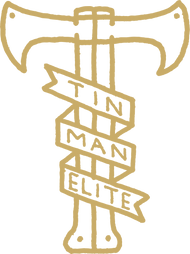
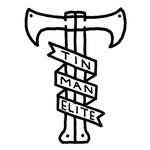
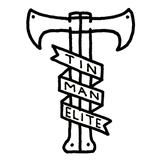
Leave a comment